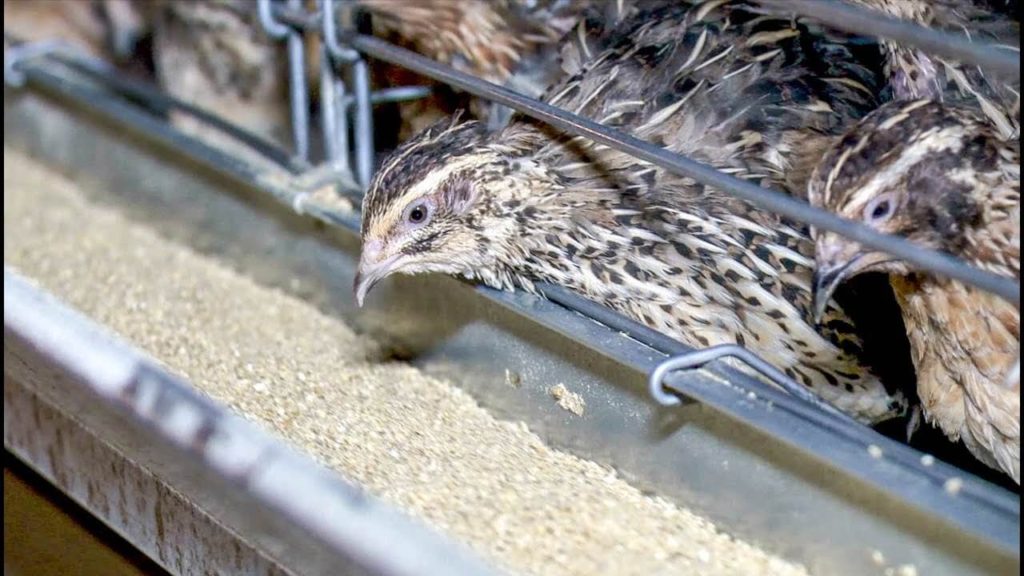Commercial Coturnix Quail production is now a major industry in many countries. Each year, millions of quail are raised for both meat and egg production.
Quail farming has many advantages. One of these is that quail reach maturity and start laying eggs much sooner than chickens and other poultry. Coturnix Quail typically begin laying eggs at around 6 weeks of age, and can produce more than 300 eggs per year.
The quail’s fast reproductive cycle enables fast production and replenishment. This makes it possible to generate a large quantity of eggs and meat in a short time.
Advances in breeding techniques and farming practices have made it possible to produce large quantities of quail. This production is both efficient and cost-effective. Additionally, higher standards of animal welfare are maintained.
Commercial Coturnix Quail Housing
In commercial quail farming operations, quail are typically raised in specialized housing systems that allow for high-density production. The type of housing for quail on a farm can vary.
Coturnix quail are adaptable birds that can thrive in a variety of housing and environmental conditions. However, commercial quail farmers must provide a suitable environment that meets the birds’ basic needs for food, water, and shelter. The housing system should also be designed to promote optimal growth and egg production.
Commercial quail farms typically use indoor housing systems, such as wire cages or floor pens, to manage their flocks. These systems are easy to clean and maintain, and they help protect the birds from predators and diseases. Temperature control is essential for quail production. Farmers must provide adequate heating and cooling for their flocks to stay healthy and productive.
Breeding and Genetics
The success of commercial quail production depends largely on breeding and genetics. Breeders strive to create strains with advantageous traits. This is done in order to maximize productivity and feed conversion.
Farmers can also improve the genetics of their flocks through the process of selective breeding. This includes traits such as rapid growth, high egg production, and disease resistance. This helps farmers maintain consistent quality over time.
Commercial Coturnix Quail Nutrition and Feeding
Coturnix Quail are omnivores and require a balanced diet that provides adequate protein, energy, vitamins, and minerals. Commercial quail feed usually has a blend of grains, like corn and soybean meal. It also contains animal protein sources, such as fish meal or soy protein concentrate.
Quail have different nutritional needs, depending on their age and use (meat or egg production). Farmers must adjust their feeding program to meet these needs.
Quail are also prone to cannibalism. To prevent this, farmers must provide appropriate feeders and waterers. These will prevent the birds from pecking at each other. Farmers must provide their flocks with clean water at all times. Dehydration can cause reduced egg production and slow growth.
Disease Management
Like all livestock, quail are susceptible to a variety of diseases and infections. Commercial quail farmers must implement strict biosecurity measures to prevent the introduction and spread of diseases within their flocks. Regular cleaning and disinfection of housing and equipment are necessary. Additionally, visitor access and the movement of birds between farms must be strictly controlled.
Vaccination is also an important part of disease management in quail production. Farmers may vaccinate their flocks against common diseases such as Marek’s disease and coccidiosis. Early detection and treatment of any health issues is critical to maintaining a healthy and productive quail flock.
Is it Worth It?
Commercial production of Coturnix quail is a viable and profitable business. Farmers must invest in the necessary infrastructure and management practices to make this successful. This is an option worth considering.
Farmers can develop a successful quail production operation by focusing on five key areas: – Breeding and genetics – Housing and environment – Nutrition and feeding – Disease management – Marketing and sales By doing this, they can meet the demands of the market and have a sustainable source of income.
